| Saturday, January 11, 2003 |  |
|
|
|
 I wrote this little essay some years ago called Free Resources. It pointed out the relatively new phenomenon at the time that it can be quite viable to give things away freely, even for a business. And I also expressed a strategy for gradually making more things free. You know, if I look at the resources available to me, and I identify what I can freely share with others, and I work on increasing the number and variety of resources I can freely share, and others do the same, then we'd gradually be getting somewhere. Somewhere where a lot of what we need is freely and easily available for everybody. I'm not talking about whether I might take time out of my schedule to work hard for some charity once per week. I'm not talking about sacrifice. I'm talking about arranging things so that it is perfectly feasible and comfortable to give something away, without particularly being worse off myself. I wrote this little essay some years ago called Free Resources. It pointed out the relatively new phenomenon at the time that it can be quite viable to give things away freely, even for a business. And I also expressed a strategy for gradually making more things free. You know, if I look at the resources available to me, and I identify what I can freely share with others, and I work on increasing the number and variety of resources I can freely share, and others do the same, then we'd gradually be getting somewhere. Somewhere where a lot of what we need is freely and easily available for everybody. I'm not talking about whether I might take time out of my schedule to work hard for some charity once per week. I'm not talking about sacrifice. I'm talking about arranging things so that it is perfectly feasible and comfortable to give something away, without particularly being worse off myself.
Software remains the best example. Free Open Source software is today the best stuff you can find in a number of categories. The open source model has turned out to be a more reliable and efficient way of producing high quality software and distributing it widely. It costs almost nothing to copy software, and that means in part that smart people can build on lots of other smart people's work, and do something better than they otherwise could.
The music market started moving in that direction, of making it easy to share music easily and freely - Napster - but it is a mixed success at this point, as the big central media companies don't understand it, think it is evil, and are spending a lot of resources on making sure their products can't be shared.
Lots of free Wi-Fi wireless networks are springing up in many places. Individuals and small companies leave their wireless network open to whoever is in the proximity. They do that either unknowingly, or because they can, and because they think it might useful to somebody. A very small number of ISPs support it. The majority think it is theft and are trying to find ways of making it impossible.
There is obvioiusly a clash between different systems and different cultures there. I think it can be a vibrant and viable economic model to work on making more and more things free and easy to distribute widely. And it can very well be very profitable along the way for the originators of technologies and content that supports that. But then there are the big and powerful companies who don't get it, who believe that sharing is theft, and that it couldn't possibly be economically viable for anything to be free. And they're wrong. The most long-term viable production and distribution solution is for it to be free. Sunlight and air is in ample supply, no matter how much you share it and give it away.
It brings an interesting secret to light. You know, Monsanto sells suicide seeds to farmers. They work for the crop of one season, but they don't reproduce, so the farmer needs to come back next year and buy new seeds. That's the perfect model for many big corporations, and it is essentially what they're doing. You pay money and buy their product, thinking that it is now yours. And if it really were yours, you could of course do with it what you want, including sharing it with your friends or giving it away to somebody else. But there's a lot of small print, which you usually don't pay attention to. And the legal truth is usually that it isn't yours, even if you paid for it.
The solution is obvious if we pay more attention. Focus on alive, fertile, self-reproducing products, that can be modified, expanded, shared, given away, re-combined, re-cycled, re-invented. And start forgetting about suicide products that legally self-destruct in your hands right after you've looked at them, or the moment you consider using them in a new creative or beneficial way.
"Out of abundance He took abundance and still abundance remains." -- The Upanishads
[ Patterns | 2003-01-11 14:15 | | PermaLink ] More >
|
|
| Sunday, December 29, 2002 |  |
|
|
|
 "The advantage of a free market is that it allows millions of decision-makers to respond individually to freely determined prices, allocating resources – labor, capital and human ingenuity – in a manner that can’t be mimicked by a central plan, however brilliant the central planner." --Freidrich von Hayek "The advantage of a free market is that it allows millions of decision-makers to respond individually to freely determined prices, allocating resources – labor, capital and human ingenuity – in a manner that can’t be mimicked by a central plan, however brilliant the central planner." --Freidrich von Hayek
Sounds terrific. I hope to see one some day.
[ Patterns | 2002-12-29 23:59 | | PermaLink ] More >
|
|
| Monday, December 23, 2002 |  |
|
|
|
Posted by shelala on weeno.com, some points of good advice on spotting when a person is lying to you:
1. No eye contact. His eyes will look away. If the room has a means of egress - that's where they'll look.
2. Crossing of arms and/or legs (a protective instinct).
3. The pupils of the eyes will narrow. Lying is stressful.
4. Hands on the face, especially the mouth. They are "covering" the lie.
5. Talking fast. A liar wants to get it over with.
6. Sometimes the head will nod a "no" when answering a "yes" question or visa versa. This is a subconcious movement.
7. Mispronouncing the words or mumbling. A liar kinda thinks he is not lying when he pronounces words incorrectly or mumbles.
8. Overstated friendliness/laughing. He wants you to believe and he wants you to like him so you will believe him. And I'd say those are correct. The way I see it, you'd be looking for whether there is congruency between what the words say and what the person's body says. The body is typically much more truthful than the words. None of those signs will say for sure, as there might be many other reasons for being nervous or not meaning what one says. And it only works on people who aren't trained in being good liars. Politicians being a good example. So, it works for O.J. Simpson, but not for George W. Bush.
[ Patterns | 2002-12-23 22:25 | | PermaLink ] More >
|
|
| Thursday, December 19, 2002 |  |
|
|
|
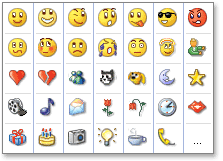 BigCat talks about the Mood of the Blogosphere: BigCat talks about the Mood of the Blogosphere:"I'm not sure if this is a rehash of an old idea, an improvement to it, or something totally useless, but here goes:
j-mo talks about wanting her blog to immediately express her mood. Lots of people have various icons on their entries on Live Journal and other places to show current mood.
It always seems that some days are bad mood days for lots of people. This time of year often has a lot of those days.
The idea of measuring this is a little like imood and their "mood of the Internet" - but that is a single service that you have to register for. I don't really think that scales very well. It seems like an open system that all could use for whoever they wanted to would be better.
What I'm thinking about is a standard XML tag that could be read by the various RSS aggregators and such (read Scripting News and the links there if you are interested in more about this).
This could also be worked into blogging software - set your mood and it sets the styles or whatever you want automatically.
Anyone could them compile a "mood" index for the part of the world that interested them - ranging from just their friends to everyone listed in one of the big indexes..." Hm, yeah. It is just that I wouldn't be happy with simple moods like 'happy','sad' and 'tired'. For me it is more that different times have a different energy. Some days are for lying in your bed reading comic books. Other days are high energy days for getting something done. I don't always pay attention to that, so sometimes I go against the flow, and try to make something happen that just isn't gonna happen on such a day. But, yeah, I'd like some way of flagging it, or noticing it collectively.
[ Patterns | 2002-12-19 04:12 | | PermaLink ] More >
|
|
| Wednesday, December 18, 2002 |  |
|
|
|
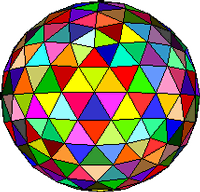 Years ago I wrote up a vision about a synergetic society that I called HoloWorld. It is incomplete, and I still hope to put more meat on it, but nevertheless it is fairly detailed. It all boils down to some very simple principles, like: Years ago I wrote up a vision about a synergetic society that I called HoloWorld. It is incomplete, and I still hope to put more meat on it, but nevertheless it is fairly detailed. It all boils down to some very simple principles, like:
People are free to choose how to live
That can be expressed in an assortment of ways, each of which is more or less likely to be misunderstood by a lot of people. "People can do what they want". "An it harm none, do what thou wilt". Anyway, when used as an organizing principle, a whole lot of other principles and approaches would have to come from that. As everybody aren't likely to agree on how they want things, we must inevitably have:
Negotiation of self-interest taking place along the edges
Edges of what? Edges of any space of any kind where one or more people have a certain interest, a certain agreement on how things are supposed to be. So, if anybody has a different idea about what is supposed to happen, there's something to talk about. And if groups of people arrive at somewhat homogenous agreements on how they like things to be, but some people don't like it, there's then a need for:
Voting with your feet
Meaning, that if you don't like how things work in one place, you move into another place where things are more to your liking, or you make a new place and invite people to come to it. That implies the principle that you are allowed to arrange things in different ways in different places.
[ Patterns | 2002-12-18 02:41 | 0 comments | PermaLink ] More >
|
|
| Sunday, December 15, 2002 |  |
|
|
|
 From Tom Munnecke Vicious Circles/Networks to Virtuous Circles/Networks: From Tom Munnecke Vicious Circles/Networks to Virtuous Circles/Networks:"One of Senge's patterns is the general problem addiction loop. Quick fixes seem to solve a problem, but often feed back to create other problems. Fundamental solutions which take longer to understand and implement are ignored in the flurry of quick fixes, creating a vicious circle. The flurry of quick fixes then feeds some kind of assessment system which makes it appear that we are being productive, with all that activity going on. This is like trying to get out of a hole by digging it deeper, and measuring your productivity by how many shovelfuls you scoop each day.
The flip side of this is to create a virtuous circle, addressing the fundamental issue to create a solution-generating feedback loop. This dissolves problems rather than solves them, which appears to be infinitely unproductive to those who use problem-solving metrics..." And let me add this quote which says the same kind of thing:"It is not enough to be busy, so are the ants.
The question is: what are we busy about?"
- Henry David Thoreau
[ Patterns | 2002-12-15 23:58 | | PermaLink ] More >
|
|
| Saturday, December 14, 2002 |  |
|
|
|
 Nice little article about how to arrange things on the web so that energy flows in the most desirable ways. Nice little article about how to arrange things on the web so that energy flows in the most desirable ways."The user must find it easy and intuitive to get around your website. If they feel that they have reached a 'dead end', and have to use the 'back' button to get out, you have got a terminal stagnation of ch'i. If the user can swim easily through your pages to get to where they would like to be, that's great ch'i."
[ Patterns | 2002-12-14 23:59 | 0 comments | PermaLink ]
|
|
| Thursday, December 12, 2002 |  |
|
|
|
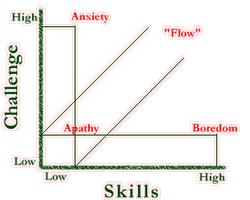 Mihaly Csikszentmihalyi (pronounced chick-sent-me-high-ee) is known as the architect of the notion of flow in creativity. People enter a flow state when they are fully absorbed in activity during which they lose their sense of time and have feelings of great satisfaction. Mr. Csikszentmihalyi describes flow as Mihaly Csikszentmihalyi (pronounced chick-sent-me-high-ee) is known as the architect of the notion of flow in creativity. People enter a flow state when they are fully absorbed in activity during which they lose their sense of time and have feelings of great satisfaction. Mr. Csikszentmihalyi describes flow as "being completely involved in an activity for its own sake. The ego falls away. Time flies. Every action, movement, and thought follows inevitably from the previous one, like playing jazz. Your whole being is involved, and you're using your skills to the utmost."
[ Patterns | 2002-12-12 23:59 | | PermaLink ] More >
|
|
| Wednesday, December 11, 2002 |  |
|
|
|
 I need a piece of software, or a pattern or structure, for solidifying ideas. For putting more meat on something that starts out vague or abstract. Let's say I decide I'm interested in "Patterns of Upliftment" or "Communities of Virtue", but I might not even quite know what that means. Then, when I go through life, or through the web, I might notice "Aha, that's an example of ___" or "That's a good definition of ___" or "Oh, those people are studying ___". And I want to file it with my focus subject. It should be in a format I can easily share, on a webpage, so others can come along and see the idea getting more substantial, and maybe contribute to it. Well, there is Wiki-Wiki, which allows easy posting and updating by multiple people. But I suppose I'm looking for something that actually guides me towards a convergence, a clarification or solidification of the subject matter. A Wiki-Wiki would tend to encourage divergence, creating new branches. A piece of paper doesn't work, because I can't find the original sheet again when I happen to run into a piece of the puzzle I'm trying to assemble. I need a piece of software, or a pattern or structure, for solidifying ideas. For putting more meat on something that starts out vague or abstract. Let's say I decide I'm interested in "Patterns of Upliftment" or "Communities of Virtue", but I might not even quite know what that means. Then, when I go through life, or through the web, I might notice "Aha, that's an example of ___" or "That's a good definition of ___" or "Oh, those people are studying ___". And I want to file it with my focus subject. It should be in a format I can easily share, on a webpage, so others can come along and see the idea getting more substantial, and maybe contribute to it. Well, there is Wiki-Wiki, which allows easy posting and updating by multiple people. But I suppose I'm looking for something that actually guides me towards a convergence, a clarification or solidification of the subject matter. A Wiki-Wiki would tend to encourage divergence, creating new branches. A piece of paper doesn't work, because I can't find the original sheet again when I happen to run into a piece of the puzzle I'm trying to assemble.
[ Patterns | 2002-12-11 15:37 | | PermaLink ] More >
|
|
|
|
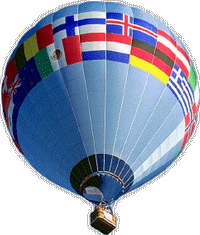 From Tom Munnecke: From Tom Munnecke:to quote Freeman Dyson: "To help the poor from "the top down" is least likely to succeed. But science and technology are concentrated at the top, making top down the method of choice for those in power. The challenge, he said, is to find ways to help people by providing science and technology from "the bottom up." Â…Three successful "bottom up" approaches described by Dyson share an important trait: As they succeeded, they spread quickly. Dyson calls this 'autocatalysis' -- a chemistry term meaning that as a chemical reaction proceeds, it automatically accelerates. When, for example, British farmers in the 1950s began using drying sheds to keep their harvests dry, the technology spread rapidly. "As soon as the sheds were shown to be effective, every farmer had to have one," Autocatalysis is a "key virtue to look for in any technology that claims to improve human welfare on a large scale," he added."
He introduces two profound questions:
1. How do we improve human welfare on a global scale?
2. What energy could 'automatically accelerate' to fuel this improvement?
It seems to me that we can address #1 above by applying our knowledge of scale free networks to create a cascade of uplift. To do so, however, we need to figure out how to talk about uplift. One way to do this is to create an Uplift Pattern Language (UPL) which allows us to talk about patterns of uplift. This is modelled after Christopher Alexander's work on architectural patterns which has been adopted in the software community for software Pattern Languages. The Jini Community Pattern Language is an example of this applied to a community. The Uplift Pattern Language would define patterns of uplift and their contexts, within a benegnostic framework.
One application of the UPL would be to create Virtue Viruses, which would be self-propagating, self-organizing activities/messages/events which would exploit the most powerful uplift patterns. Seligman's work on Values in Action provides some fuel for thinking about this. This also relates to Hirshmann's "Finding where Virtue is afoot" quoted by David Ellerman.
[ Patterns | 2002-12-11 05:17 | | PermaLink ] More >
|
|
| Wednesday, December 4, 2002 |  |
|
|
|
 From Eclectricity: "The town of Bowie Maryland on the outskirts of Washington has built a fountain based on the mathematical ideas of the great mathematician Fibonacci. From Eclectricity: "The town of Bowie Maryland on the outskirts of Washington has built a fountain based on the mathematical ideas of the great mathematician Fibonacci.The fountain's design embodies an intimate link between Fibonacci numbers and an irrational number known as the golden ratio, (1 + sqrt[5])/2, or 1.6180339887. . . . Ratios of successive terms of the Fibonacci sequence get closer and closer to the golden ratio. For example, the ratio 55/34 is 1.617647. . ., and the next ratio, 89/55, is 1.6181818. . ., and so on. Successive ratios alternate in overshooting and undershooting the golden ratio by decreasing amounts."
[ Patterns | 2002-12-04 20:10 | | PermaLink ] More >
|
|
| Tuesday, December 3, 2002 |  |
|
|
|
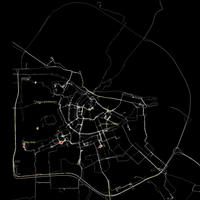 In an experiment in Amsterdam lots of the city's inhabitants were equipped with GPS (Global Positioning System) devices for two months, in order to make a realtime map of the city. The map is created exclusively from the accummulated movements of individuals. And, of course, people who ride bicycles create different maps from people in cars or subways. In an experiment in Amsterdam lots of the city's inhabitants were equipped with GPS (Global Positioning System) devices for two months, in order to make a realtime map of the city. The map is created exclusively from the accummulated movements of individuals. And, of course, people who ride bicycles create different maps from people in cars or subways.
[ Patterns | 2002-12-03 19:57 | | PermaLink ] More >
|
|
|
|
 Patterns interest me greatly. No, not on wallpaper or embroidery. The patterns that people or ideas or things might be arranged in, and what those different patterns mean, or what they allow to happen. That is essential to fields spanning from architecture to organization to language to magic. Patterns interest me greatly. No, not on wallpaper or embroidery. The patterns that people or ideas or things might be arranged in, and what those different patterns mean, or what they allow to happen. That is essential to fields spanning from architecture to organization to language to magic.
It is probably Chris Alexander who most brought forward that way of looking at patterns. He is an architect who wrote "A Pattern Language". It is at first glance a book about architecture, about building buildings. But really it is about the patterns of arranging things so that good things happen with and for people. It contains a 'vocabulary' of hundreds of detailed patterns and describes in detail why they are arranged that way, and what they accomplish. And what I find most interesting is the possibilities in taking a similar philosophy much further, and finding it in other places. The following is from a review of the book by audrey_the_librarian: "While others have noted that Alexander's ideas inspired changes in software engineering, I would also like to note that the author's ideas were, in turn, most likely informed by others, such as neuroscientist Karl Lashley and, in particular, linguist Noam Chomsky. Chomsky developed the idea of a generative grammar, composed of constituent symbols, a set of rules and a set of terminal elements, which together describe all possible sentences in a language. This was considered revolutionary at the time and is quite similar to Alexander's characterization of his patterns, described as a context combined with a system of forces or rules generating an infinite number of solutions in the form of sets of specific design elements. That configuration, in turn, becomes the context for another pattern. The theory's dynamism and scalability render it very powerful indeed.
I think another interesting approach to this philosophy would be to reverse engineer our own environment. To say, Obviously there is a Pattern Language at work in the larger world in which we live, and it is decidedly in opposition to what Mr. Alexander and others, including myself, believe is preferred. What are the rules of that language? What is the context within which those elements operate? The author codifies a desirable Pattern Language. I'd like to see his principles used to turn an eye toward decodifying our own milieu. This is the kind of book that leads one to think and imagine, and isn't that a wonderful thing?" Yes, indeed, reverse engineering and decodifying the world we live in, to be able to talk about its patterns - that would be a very good thing.
[ Patterns | 2002-12-03 15:39 | | PermaLink ] More >
|
|
| Sunday, December 1, 2002 |  |
|
|
|
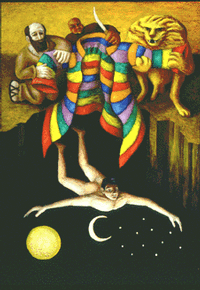 In Carlos Castaneda's stories about his apprenticeship into the world of sorcery, he describes that there are two main kinds of sorcerers: 'Dreamers' and 'Stalkers'. In Carlos Castaneda's stories about his apprenticeship into the world of sorcery, he describes that there are two main kinds of sorcerers: 'Dreamers' and 'Stalkers'.
A Stalker would be somebody who is a master at putting on or stepping into an existing reality. The term comes from a skill very useful in hunting of animals. The hunter would learn all the animal's ways, how it acts, how it thinks, when it does what, so that he would then be able to expect its moves. That would be equally useful to avoid dangerous animals. So, the stalker sorceror would be somebody who can step into different roles very easily, by being very attentive to detail, and able to morph himself into the required pattern, like a masterful actor.
A Dreamer is somebody who can dream new realities so well that one can step into them. A designer of virtual realities, so to speak. That might start with the ability to be conscious and in control while one is asleep, dreaming. Lucid dreaming, astral traveling. So, instead of just being asleep and maybe remembering a dream when waking up, the dreamer remains in control of his faculties and can travel around in the dream and rearrange things. The dreaming ability translates into a fluid ability to create new things, and to go places where nobody has gone before.
One reason I'm mentioning this here, is that there are many fields that need skills like these. The masterful ability to take in how something or someone works, so you can be in perfect rapport. The masterful ability to create something totally new, so well that you or somebody else can step directly into the experience, and proceed as if it is real.
[ Patterns | 2002-12-01 17:16 | | PermaLink ] More >
|
|
| Tuesday, November 19, 2002 |  |
|
|
|
 One of my interests is to understand how we each construct our reality and how we might change that reality and how we might avoid having it manipulated against our best interests. For that matter, if I had to choose only one field of interest for myself, that would be it. One of my interests is to understand how we each construct our reality and how we might change that reality and how we might avoid having it manipulated against our best interests. For that matter, if I had to choose only one field of interest for myself, that would be it.
We make over-simplified conclusions about what reality we're living in, based on our incomplete perceptions and based on our abstract reasoning derived from what we previously have perceived and concluded. The neural pathways of our brains and the unspoken assumptions and fixed structures in our minds form filters that we experience the world through. Filters that make us experience only a very, very small portion of what is actually happening, and to interpret even that portion in a sketchy and generalized manner. Smart people who understand this well can provide us with manufactured scenarios that guide our perceptions into making certain conclusions about reality (which they'd like us to believe) and into avoiding certain other conclusions (which they'd like us not to know about).
Most people are so busy living IN the reality they believe they exist in so that they very rarely are able to even consider that it could be any different. So, I don't meet very many people I can talk to about these things, other than in a fairly general metaphysical context. And I'm interested in the more technical angle on it, of how we do it, and how we change it.
Right now I'm looking at organelle.org. Looks promising, like somebody delving deeply into these things.
[ Patterns | 2002-11-19 15:58 | | PermaLink ] More >
|
|
| Friday, November 15, 2002 |  |
|
|
|
 I'm very interested in how different design patterns in online environments will inspire different kinds of outcomes. You know, if things are arranged one way it fosters creativity and brainstorming, and if they're arranged in another way it might foster convergent results and agreement. I'd like to understand that better, and I'd like to create different environments for different purposes. I'm very interested in how different design patterns in online environments will inspire different kinds of outcomes. You know, if things are arranged one way it fosters creativity and brainstorming, and if they're arranged in another way it might foster convergent results and agreement. I'd like to understand that better, and I'd like to create different environments for different purposes.
I was just looking at OpenSpace Online, which is a system developed by Gabriela Ender in Germany, for coordinating an online conference based on Open Space principles. Look at the demo. Very nice system it seems, but fairly expensive for the settings I would probably think of.
[ Patterns | 2002-11-15 23:59 | | PermaLink ] More >
|
|
|
|
 Communities of Practice is something more people are talking about. See a primary article by Etienne Wenger, who is a key proponent of the concept. It is essentially a loosely organized group of people who are sharing some kind of activity, and who are learning together. That is different from a Community of Interest, which would be people interested in a certain subject or having a shared concern or desired outcome. It is also different from a geographical community, where people are linked by the fact that they live or work in the same place. None of those necessarily involve that people are sharing the same activity. In a Community of Practice people recognize that they're doing the same kinds of things, that they need the same kinds of tools and the same knowledge about using them well, but they might very well belong to different organizations or different departments in a company. So, it is not a team or a unit or a business. It is not a set of relationships or contracts, but rather it is about the activity that people share. People belong to communities of practice at the same time as they belong to other organizational structures. The community is maintained to the degree that people contribute to the activity, adding value to it as a whole. Wenger talks about the cycles associated with such a community, from discovering a need for it, towards engaging in developing the shared practice, towards it dispersing when no longer needed. There are some examples in this article. Communities of Practice is something more people are talking about. See a primary article by Etienne Wenger, who is a key proponent of the concept. It is essentially a loosely organized group of people who are sharing some kind of activity, and who are learning together. That is different from a Community of Interest, which would be people interested in a certain subject or having a shared concern or desired outcome. It is also different from a geographical community, where people are linked by the fact that they live or work in the same place. None of those necessarily involve that people are sharing the same activity. In a Community of Practice people recognize that they're doing the same kinds of things, that they need the same kinds of tools and the same knowledge about using them well, but they might very well belong to different organizations or different departments in a company. So, it is not a team or a unit or a business. It is not a set of relationships or contracts, but rather it is about the activity that people share. People belong to communities of practice at the same time as they belong to other organizational structures. The community is maintained to the degree that people contribute to the activity, adding value to it as a whole. Wenger talks about the cycles associated with such a community, from discovering a need for it, towards engaging in developing the shared practice, towards it dispersing when no longer needed. There are some examples in this article.
[ Patterns | 2002-11-15 23:59 | | PermaLink ] More >
|
|
| Tuesday, November 12, 2002 |  |
|
|
|
 Dan Winter is a sacred geometry genius. He speaks and writes a mile a minute and I can't exactly follow most of what he's saying. But some of it intuitively makes great sense. One thing he often talks about is self embedding, and there's a point there which I think is very important. I can't grasp the math, so bear with my more simplistic and possibly naive version. Dan Winter is a sacred geometry genius. He speaks and writes a mile a minute and I can't exactly follow most of what he's saying. But some of it intuitively makes great sense. One thing he often talks about is self embedding, and there's a point there which I think is very important. I can't grasp the math, so bear with my more simplistic and possibly naive version.
Multiple waves can co-exist in the same space, if they're in harmony, so to speak. If they're not in harmony they might sort of collide, but under certain circumstances the waves all sort of fit into the same space. Multiple harmonics form a unified tone. Multiple waves form one wave form which represents all of them at once.
Potentially you can pack a lot of information into a very small place if it all embeds into each other. It can travel together in a very compact form. And you can reverse it and get it all back again. So, it is non-destructive.
Fractals fit in here. A very simple recursive formula might produce something very complex. The complexity is embedded into itself in the form of a simplicity, so to speak.
Now, metaphysically or spiritually speaking, that might have something to do with self-awareness and with eternal life. If you can embed all that you are into itself in a non-destructive way, you can go through the eye of the needle, and remain intact and conscious even if you travel to another universe. Through a black hole, say.
And the point I wanted to get to here right now is that a group of diverse people with diverse talents might function well as a group if the characteristics of the members embed well into each other. Or, reversely, if they can all function as variations of the same fractal principle. There's a harmony that might take place, which isn't agreement per se. It is more that everything sort of fits together in a very economical way.
If you come in during the day and I come in during the night, we can fit in the same office. If I get a lot of mail from foreign lands, and you collect stamps, and another person recycles paper, it all fits together. If I walk across a chasm, I don't really need a 20,000 ton bridge - I just need something under my foot in the exact place where I put it at any given moment. Am I making any sense?
[ Patterns | 2002-11-12 14:10 | | PermaLink ] More >
|
|
| Monday, November 11, 2002 |  |
|
|
|
 "Wealth is when small efforts produce big results.
Poverty is when big efforts produce small results."
--quoted by Robert Allen Well, that is maybe a lot more profound than it seems. OK, its a cool thing to quote when you're selling get-rich programs. But it is a lot more, and it applies to any kind of effort, not just to money making. Some people predominantly produce a lot of hard work and effort that doesn't accomplish much. Others do some relatively simple things that make much bigger things happen. That is leverage. Doing more with less.
Is it maybe a driver for human evolution? Is it what we're here to do - to accomplish more, more and more easily? Those who get the most done with the least effort are spearheading evolution?
Maybe. But we need to sort out some kinks. The easiest way of getting the biggest result with the least effort is to steal the result of somebody else's work. It is easier to pump oil out of the ground than to figure out how to make our own energy. It is easier to steal a car than to design and build one. Is it ethical to have people work hard for you, for little money, while you go on vacation in the corporate jet? Where's the line between intelligent doing-more-with-less leverage and the buy-low-sell-high exploitation of others?
[ Patterns | 2002-11-11 23:48 | | PermaLink ] More >
|
|
|
|
 It would be valuable for people in any profession or activity to have an awareness of how we simplify our experience in order to make sense of it. That might allow you to stay more sane within a confusing world. General Semantics is a discipline that goes deeply into that. Here are a few tips .. It would be valuable for people in any profession or activity to have an awareness of how we simplify our experience in order to make sense of it. That might allow you to stay more sane within a confusing world. General Semantics is a discipline that goes deeply into that. Here are a few tips ..
To any experience we're having, there are several levels to it, which could be described like this:
Event (process) level
Object level
Descriptive level
Inference level(s)
If you're not aware of which levels you're currently focusing on, you might easily get in trouble.
[ Patterns | 2002-10-12 15:20 | | PermaLink ] More >
|
|
<< Newer stories Page: 1 2 3 4 5 6 Older stories >> |

